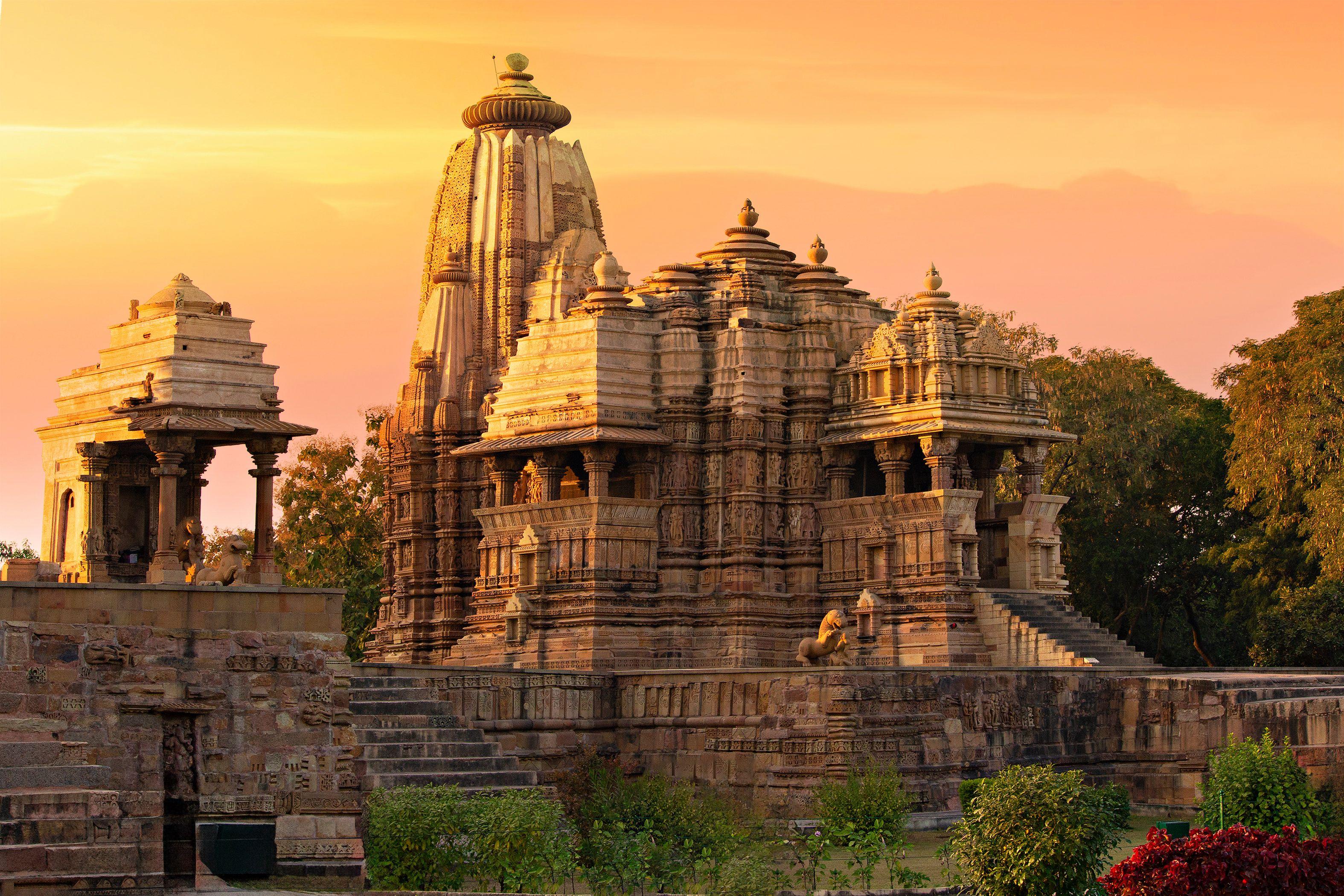
Khajuraho
Judhajit Samajdar
1/11/2025
In the heart of Madhya Pradesh, the village of Khajuraho stands as a testament to the extraordinary craftsmanship and spiritual devotion of the Chandela dynasty. Renowned for its temples, Khajuraho is a place where art and devotion blend seamlessly. These structures built over a thousand years ago reflect a deep reverence for the balance between yoga, knowledge, sensuality, and divine power.
Legend holds that the Chandela rulers descended from Hemavati, blessed by the moon god in a dream, inspiring the creation of these temples. They are celebrated for their intricate sculptures, which capture diverse aspects of life, from spiritual devotion to academic & the artistic. Today, Khajuraho is a UNESCO World Heritage Site, revered not only for its striking architectural beauty but also for its deep cultural and spiritual significance.
Constructed using sandstone sourced from the nearby Ken River, the temples follow the Panchayatana style, with a central shrine surrounded by four smaller ones, symbolizing balance. Many temples have sculptures that represent Mongolian, Persian, and Chinese soldiers, while some have women holding telescopes. It also tells us about the fashion of that time with 182 hair and 16 beard styles. While 85 temples were originally built, 25 remain, each offering a testament to the skill and vision of the Chandela dynasty.
Lakshmana Temple: A Shrine of Eternal Harmony
The Lakshmana Temple, consecrated in between 930 to 954 AD by King Yashovarman, is a jewel of Khajuraho’s architectural heritage. Dedicated to Vaikuntha Vishnu, the deity is uniquely depicted here with his family, embodying the spirit of divine unity. Legend has it that the temple’s Magar Toran (crocodile arch) symbolises the eternal flow of the Ganga, while the structure itself reflects the cosmic order.
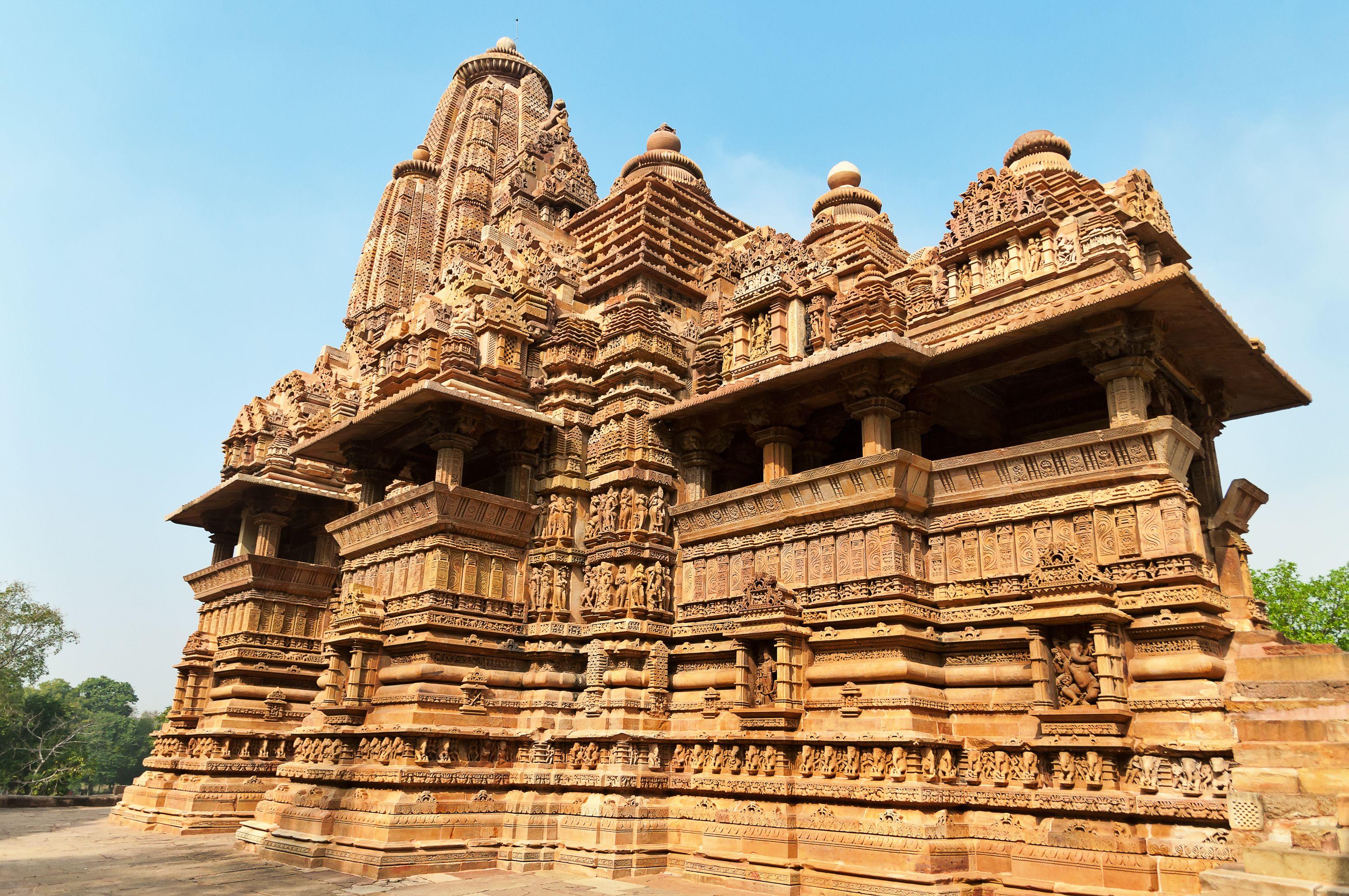
Carved in the Panchayatana style, the temple’s sandstone walls are adorned with depictions of celestial beings, dancers, and mythological tales. A stunning feature is its alignment with the Lakshmi Mandir; at dusk, the sun’s rays illuminate the idol within. The Lakshmana Temple stands as both a design masterpiece and a spiritual beacon, bridging the mortal and divine while reflecting the timeless ethos of the Chandela dynasty.
Kandariya Mahadev Temple: A Celestial Symphony
A pinnacle of Khajuraho’s architectural heritage stands at an impressive 117 feet high, showcasing the artistic mastery of the Chandela dynasty. Built between 1025 and 1050 CE by King Vidyadhara, the temple is dedicated to Lord Shiva, symbolizing his divine presence through the central Shivalinga housed in the garbhagriha.

The temple's design mirrors Mount Kailash, Shiva's celestial abode, with its towering spire and intricate sandstone carvings that reflect cosmic order. Its exterior is adorned with three layers of sculptures, featuring deities like Agni, the fire god, alongside a myriad of celestial beings and mythical motifs. The expressive niches celebrate life through finely detailed figures, including mithuna couples and yogic postures, while also honouring the Saptamatrikas—seven mother goddesses—alongside Ganesha and Virabhadra.
Inside, the sacred lingam invites reflection, while the outer carvings vividly portray life's beauty and devotion. The temple not only serves as a spiritual beacon but also as a UNESCO World Heritage site, encapsulating the rich cultural tapestry of ancient India.
Parshvanath Temple: A Testament to Jain Devotion
The largest Jain temple in Khajuraho, is a stunning testament to Jain devotion and artistry, dating back to 960 AD during the reign of Chandela king Dhanga. This architectural marvel features an oblong layout that includes an entrance porch, a spacious mandapa, a vestibule, and a sanctum housing exquisite sculptures of Jinas. The ceiling of the porch is adorned with intricate chain and floral patterns, complemented by depictions of flying vidyadharas, lending an ethereal quality to the space.
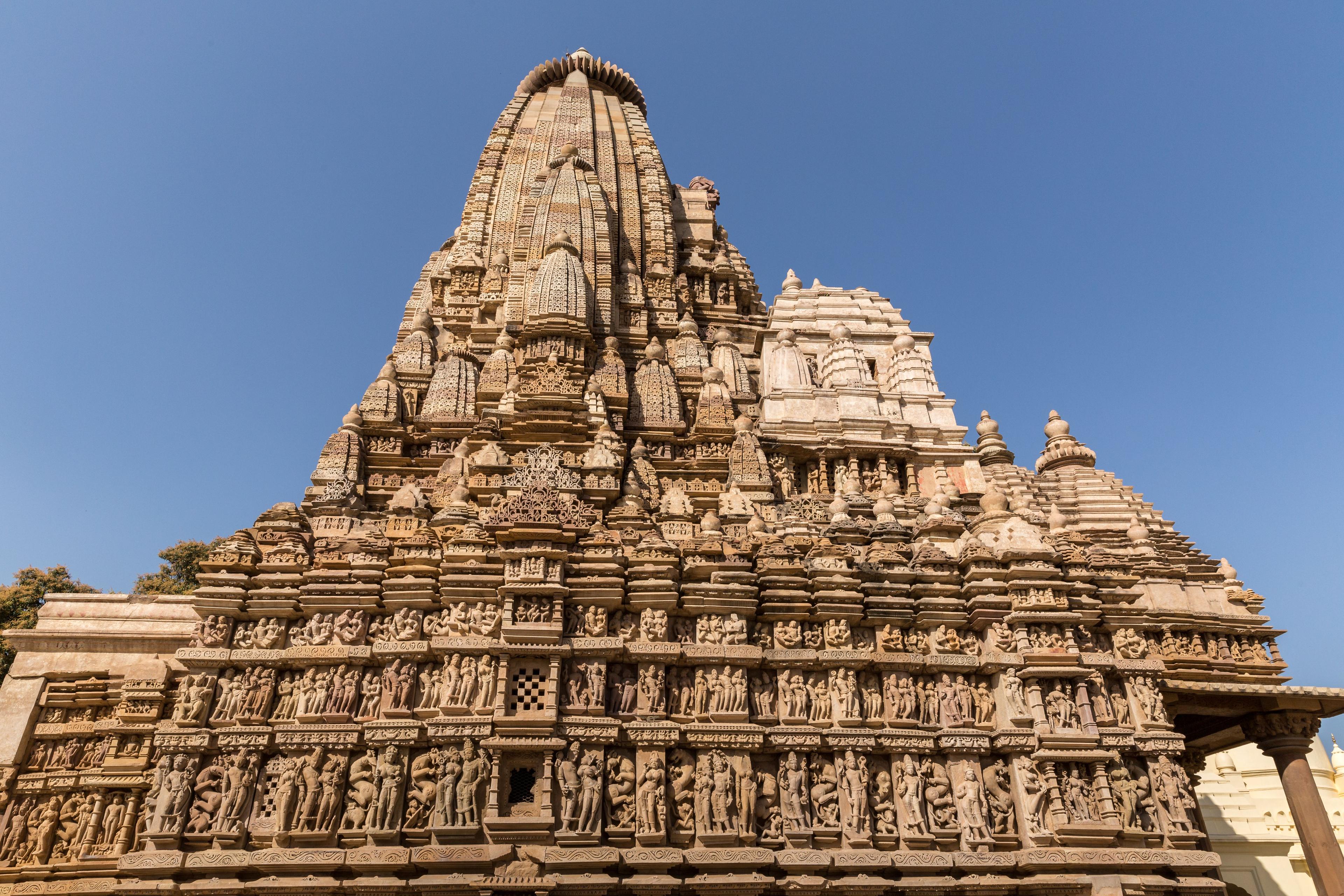
While primarily a Jain temple dedicated to Parshvanath, it uniquely incorporates some Vaishnavite themes, including representations of Vishnu-Lakshmi and scenes from the Ramayana and Krishna legends. Notably, the temple also features a rare Jain magic square inscription, symbolizing cosmic harmony and enhancing its significance as a cultural and spiritual landmark.
Adinath Temple: An Ode to the Eternal Sage
The Adinatha Temple in Khajuraho exemplifies exquisite artistry and cultural synthesis. Its exterior features three bands of intricate sculptures, including surasundaris (celestial women), flying vidyadhara couples, vyalas (lion-like beings), and dancers with musicians. Despite its Jain affiliation, carvings of Hindu deities highlight the region's syncretic traditions.
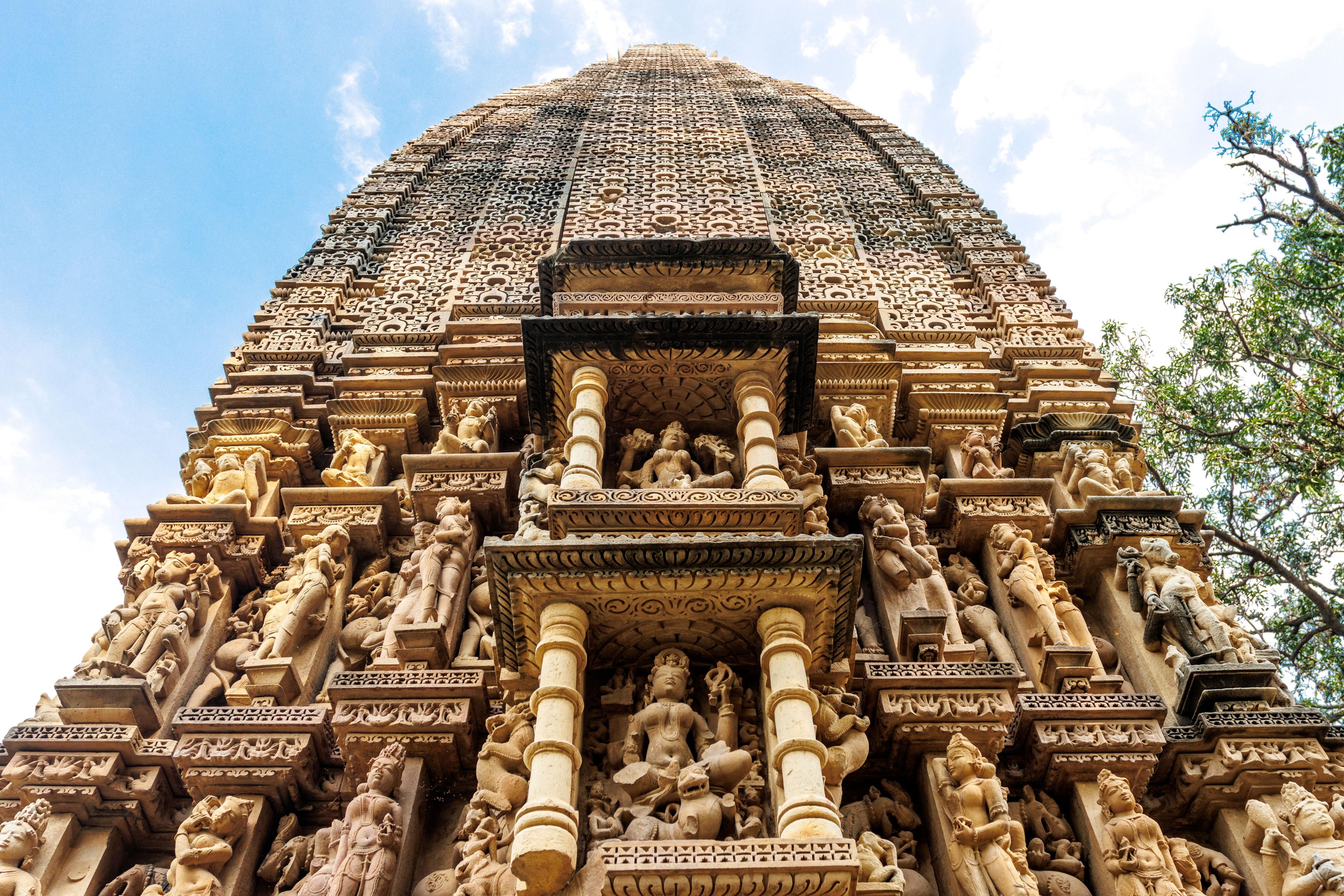
Prominent niches display Jain yakshinis like Ambika, Chakreshvari, and Padmavati. A striking sculpture depicts Adinatha seated with an ushnisha, flanked by a dharmachakra and bull, symbolizing his spiritual significance. The facade features celestial musicians and apsaras, reflecting the Chandela dynasty's ornamental aesthetic. Another sculpture shows Adinatha in padmasana on a lotus-adorned seat, accompanied by a yaksha, yakshini, and symbolic bull. The Adinatha Temple stands as a testament to medieval India's rich artistic and cultural legacy.
Khajuraho’s Legacy: Beyond Temples and Time
Khajuraho stands as a timeless testament to the harmonious blend of art, devotion, and cultural exchange. The temples, with their intricate carvings and inscriptions, such as the Persian text at the Matangeshwar Mahadev Temple invoking blessings, and the 675 intricately carved figures of the Varaha Temple, reflect a legacy of creativity and spiritual reverence.
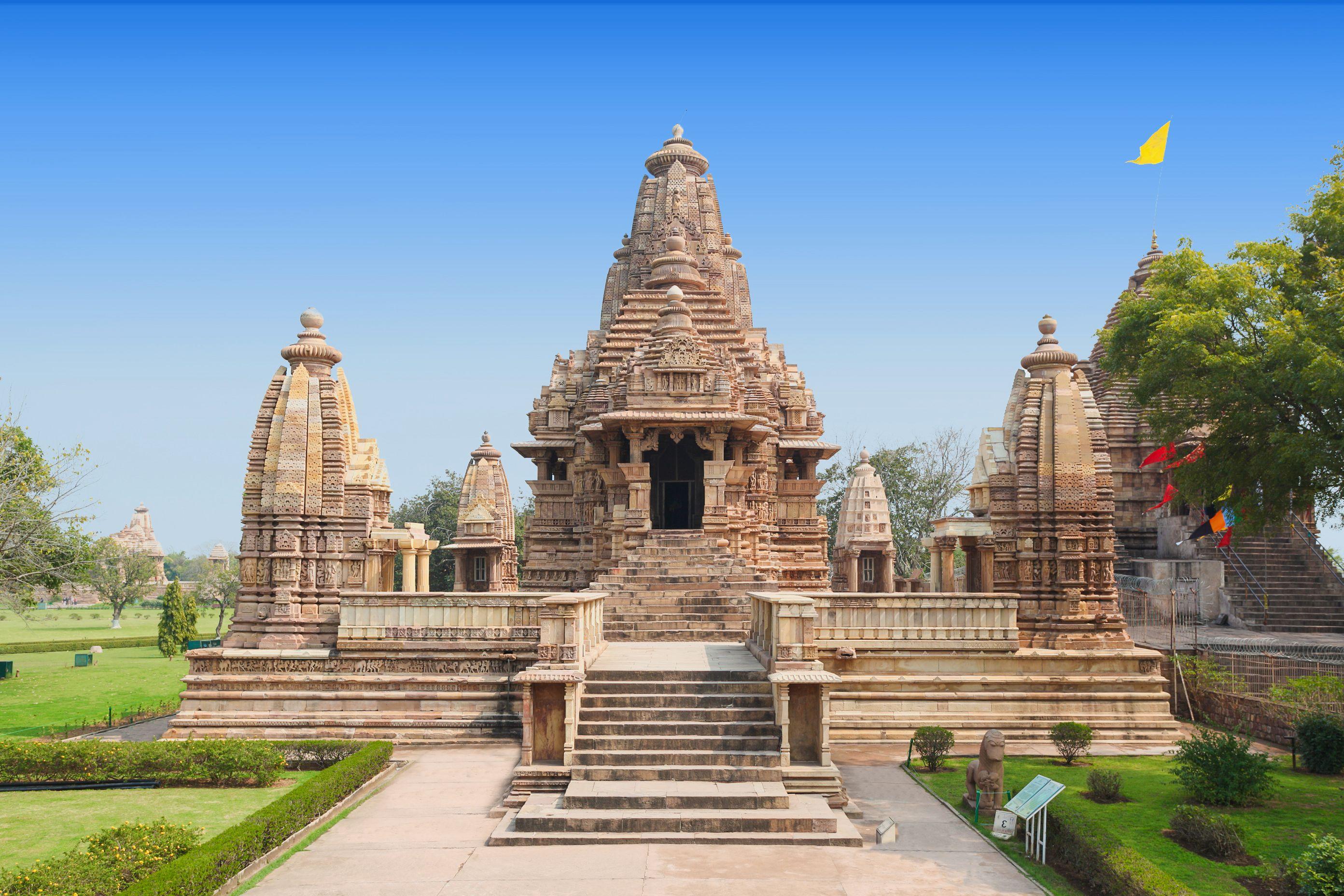
Together, these enduring monuments embody a fusion of Hindu and Jain traditions, preserving a rich cultural heritage that continues to inspire awe and admiration, bridging the ancient and the contemporary.